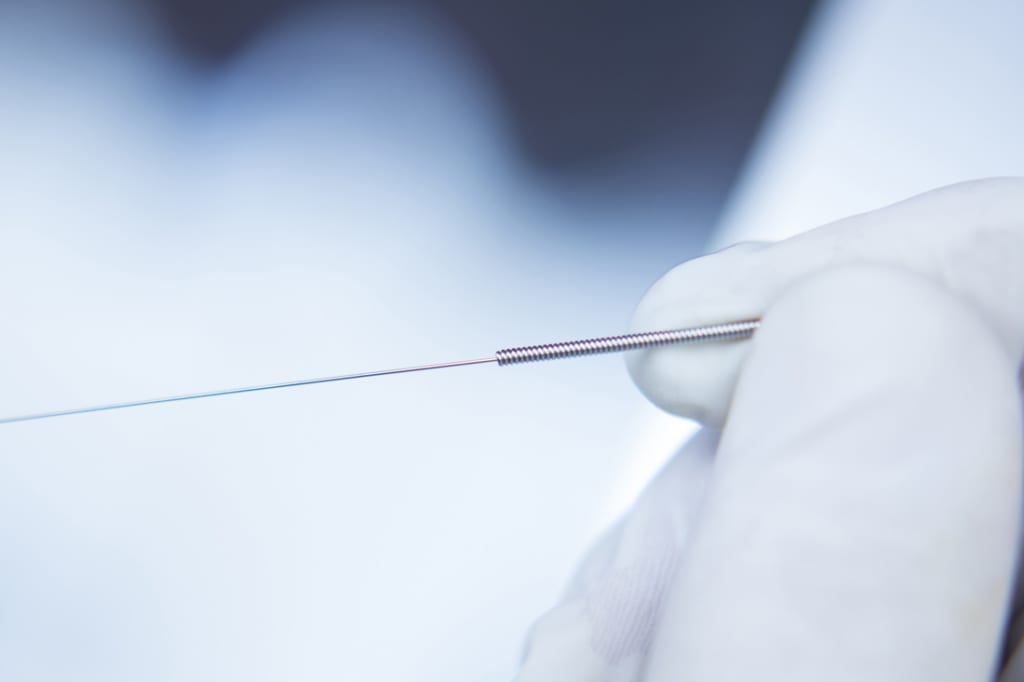SORE OR INJURED MUSCLES? CONSIDER DRY NEEDLING THERAPY

The thought of tiny needles being stuck into your skin in the name of helping muscles feel better might make you cringe, but a technique called dry needling might be just what your body needs. Here, three area therapists share why, if you’ve considered more common treatments such as massage and physical therapy to help injured or painful muscles recover, you might want to give dry needling a shot, as well.

Understand the difference.
Acupuncture and dry needling aren’t the same thing. According to Rhett Roberson, physical therapist and clinic director at The Sports Rehabilitation Center in Brookhaven, dry needling is a procedure performed with needles by a licensed physical therapist that is designed to treat myofascial trigger points (MTrPs) within muscular tissue. “Our muscles can occasionally be overworked or underworked, and this has the potential to lead to the development of MTrPs in the muscle fibers,” he says. “These are basically taut bands of fibers within a muscle that can generate pain.” Acupuncture approaches the human body from a different perspective than physical therapy, explains Roberson. “Dry needling treats trigger points locally within a muscle to address dysfunction,” he says, “[whereas] the goal of acupuncture is to restore the body’s chi, or energy flow, through a series of points all over the body.”
Try it to tame these ailments.
“This treatment can be used to address a variety of neuromusculoskeletal conditions, because many will have associated trigger points,” says Roberson. “An example would be a patient who has sciatica and has developed associated MTrPs in the muscles that are innervated by the sciatic nerve.” Other ailments that can benefit from dry needling include tennis elbow, runner’s knee, rotator cuff tendinitis and plantar fasciitis.

Know before you go.
A typical treatment goes a little like this, explains Maggie Gebhardt, physical therapist at Motion Stability Physical Therapy Group in Buckhead: “The therapist finds the trigger point— or knot—in the affected muscle. Using universal precautions, the therapist then taps the needle into the trigger point and penetrates the skin. The needle stays in the trigger point until the muscle stops twitching, which is approximately 30 to 45 seconds.” The twitching releases the trigger point, restoring normal function to the muscle. Often, patients will notice a deep cramping sensation associated with the twitching, notes Gebhardt. “Once the muscle stops twitching, the needle is removed and, if necessary, more trigger points are treated.” Mandy Blackmon, a fellow physical therapist at Motion Stability, adds that dry needling is typically followed by other therapies. “For example, we might use soft tissue or joint mobilizations and movement re-education through various exercises,” she adds.
Give your body some post-treatment love.
Ask your therapist if you should apply heat or ice, as that can sometimes provide relief, says Blackmon. “You might be sore for up to 24 hours,” Gebhardt adds. “But staying hydrated and stretching and moving the treated area as much as possible can help the tissue from stiffening up again.”

Make sure it’s right for you.
Roberson advises people with conditions such as circulatory disorders and cancer to avoid dry needling. “Patients should also notify their practitioner if they’re pregnant,” says Blackmon. “While pregnancy doesn’t mean you should avoid dry needling, it should be considered, especially during the first trimester.”
WHERE TO GO
Motion Stability Physical Therapy Group
550 Pharr Road N.E., Suite 550
Atlanta 30305
404.382.8702
motionstability.com
The Sports Rehabilitation Center
2669 Osborne Road N.E.
Atlanta 30319
404.477.7777
sportsrehabcenter.com
STORY: Amelia Pavlik
Simply Buckhead is an upscale lifestyle magazine focused on the best and brightest individuals, businesses and events in Buckhead, Brookhaven, Sandy Springs, Dunwoody and Chamblee. With a commitment to journalistic excellence, the magazine serves as the authority on who to know, what to do and where to go in the community, and its surroundings.









